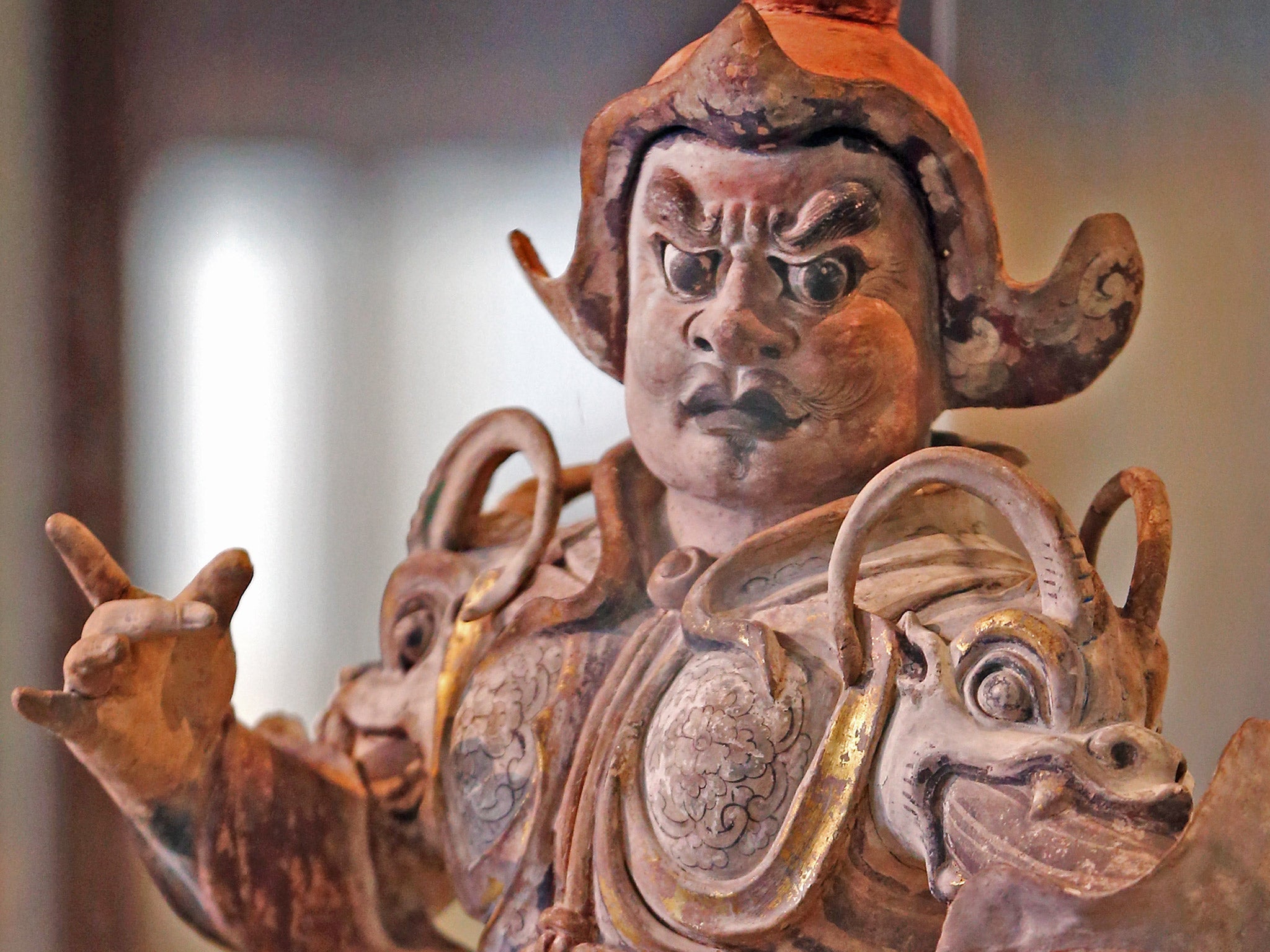More than just vases: British Museum showcases the worldly masculinity of the Ming dynasty
An exhibition at the British Museum will show that Cold War-era ideas on China’s past gave a short-sighted view of the country

The British Museum is aiming to prove there is more to Ming culture than porcelain vases with a blockbuster exhibition displaying an array of treasures – from a 15th-century gun to the world’s oldest surviving encyclopaedia – that help show the “foundations of modern China”.
The show’s curators are hoping to shake off the interpretation of “Cold War-era historians” and stress the hitherto ignored “macho culture” of the Ming court, which included hunting, horse-riding and military prowess.
The exhibition will draw heavily on new archaeological finds which “significantly alter our view of the period,” one curator said.
Ming: 50 Years That Changed China, sponsored by BP, will open on 18 September and run until early January. It promises to display “some of the finest objects ever made in China, shedding light on this important part of world history that is little known in Europe”.
Jessica Harrison-Hall, curator at the British Museum and one of the two co-curators of the Ming exhibition, said: “This is a crucial period in Chinese history. We’ll look at China as a global superpower, with one family ruling a country the size of a continent.”
She added: “This period is relatively unknown outside of China. We hope this exhibition will tell a new history of this period.”
It runs from the civil war that culminated with the Yongle emperor overthrowing his nephew in 1402 until his grandson, the Zhengtong emperor, was captured by the Mongols in 1449.
During this period, Beijing became the capital of China, the borders were fixed as they are today and the Forbidden City, still a major cultural symbol for the country, was built. As well as objects from its own collection, the museum is to display loans from 10 Chinese institutions and 21 international lenders.
The curators hope to present a new view on this period of history. Neil MacGregor, director of the British Museum, said: “We want to look at it not from the traditional European perspective, but how does China see its place in the world.”
Part of this is re-evaluating the theory that the emperors looked down on macho activities. Co-curator Craig Clunas, professor of art history at Oxford University, said: “The belief that they looked down upon hunting and horse-riding was formed in the 1950s and 1960s. New research has prompted a massive re-think.”
Among the objects is an early Chinese gun consisting of a series of tubes which would be set alight to fire projectiles. A cannon from the era will also be on display.
As well as artworks detailing daily life in the era and, of course, porcelain objects, the exhibition will provide the oldest folding fan to survive, painted on by emperor Xuande, as well as the earliest surviving encyclopaedia, which is on public display in the UK for the first time.
The original 1408 tome made for the emperor no longer exists, but copies dated from 1562 to 1572 will be used. Entries include everything from bean recipes to feng shui diagrams and how to prepare a corpse for burial. It is thought that 2,000 scholars worked on 200 volumes. Eight will be on display, on loan from the British Library.
Mr MacGregor said the exhibition was about a time when the country was “rethinking itself and reshaping itself”. Other treasures on view will include jewellery, costumes, paintings, the sword of the Yongle emperor and a rare artwork depicting a giraffe.
Mr MacGregor said: “It’s when China engages not just with its immediate neighbours, but with the whole of Asia and the Indian Ocean. It’s the moment China stops being just China and becomes, for the first time, a global power.”
During that 50-year period of the Ming dynasty, texts were published in multiple languages, and the country had links with Korea, the Middle East and Africa. Beijing hosted astronomers from Iran, Vietnamese architects and Japanese weapon specialists “all intermingling at court,” Ms Harrison-Hall said.
The exhibition marks a growing interest in Chinese culture and its past. It follows Masterpieces of Chinese Painting 700-1900, which will soon conclude at the V&A.
“The idea of China as a closed, difficult place says more about the 1970s than it does about the 1420s,” said Mr MacGregor. “It is important to understand what the world looks like if you are Chinese.”
Join our commenting forum
Join thought-provoking conversations, follow other Independent readers and see their replies
Comments